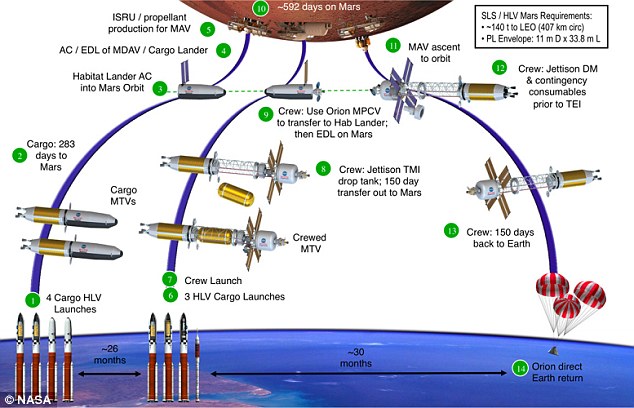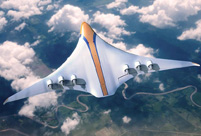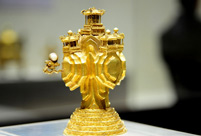


This diagram shows how the Copernicus spacecraft could be adapted to different missions and travel times

Engineers have proposed using seven launches (shown above) to carry cargo and crew to Mars in 2033
However, the project, which was a collaboration between Nasa and the US Atomic Energy Comission, was officially ended in 1973.
During that time, engineers produced several prototypes, the most advanced of which was known as a Pewee engine. None of the engines were ever used for flight.
Proposals to use nuclear powered rockets were also discussed in a presentation last year by Dr Michael Houts, nuclear research manager at Nasa's Marshall Space Flight Centre.
He described the nuclear propulsion was a 'game changing technology for space exploration'.
He said they hoped to prove the viability and affordability of the technology within the next three years.
Dr Houts said: 'Nuclear thermal propulsion is a fundamentally new capability - the energy comes from fission not chemical reactions.
'Advanced nuclear propulsion systems could have extremely high performance and unique capabilities.'
 |
 Thai most beautiful transgender Nong Poy release new photos
Thai most beautiful transgender Nong Poy release new photos Now and then photos of Shanghai Jiaotong University
Now and then photos of Shanghai Jiaotong University Is this what air travel will look like in 2050?
Is this what air travel will look like in 2050? Aerial view of watermelon terraces in S China's Baise
Aerial view of watermelon terraces in S China's Baise Traditional wedding of a post-80s Tibetan couple
Traditional wedding of a post-80s Tibetan couple Models in cheongsams present classical oriental beauty
Models in cheongsams present classical oriental beauty Second commissioned C28A corvette made by China enters Algerian Navy
Second commissioned C28A corvette made by China enters Algerian Navy Intoxicating Wuyuan in spring
Intoxicating Wuyuan in spring Gold and silver wares of Qing Dynasty exhibited in Shenyang Imperial Palace
Gold and silver wares of Qing Dynasty exhibited in Shenyang Imperial Palace Top 20 hottest women in the world in 2014
Top 20 hottest women in the world in 2014 Top 10 hardest languages to learn
Top 10 hardest languages to learn 10 Chinese female stars with most beautiful faces
10 Chinese female stars with most beautiful faces China’s Top 10 Unique Bridges, Highways and Roads
China’s Top 10 Unique Bridges, Highways and Roads Meet Beijing’s hottest new trend: vaping
Meet Beijing’s hottest new trend: vaping Govt to increase scrutiny of online retail: report
Govt to increase scrutiny of online retail: report China’s logistic hub in Djibouti to stabilize region, protect interests
China’s logistic hub in Djibouti to stabilize region, protect interests Myanmar won’t distance itself from China
Myanmar won’t distance itself from ChinaDay|Week